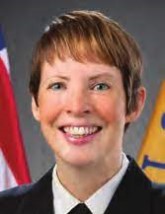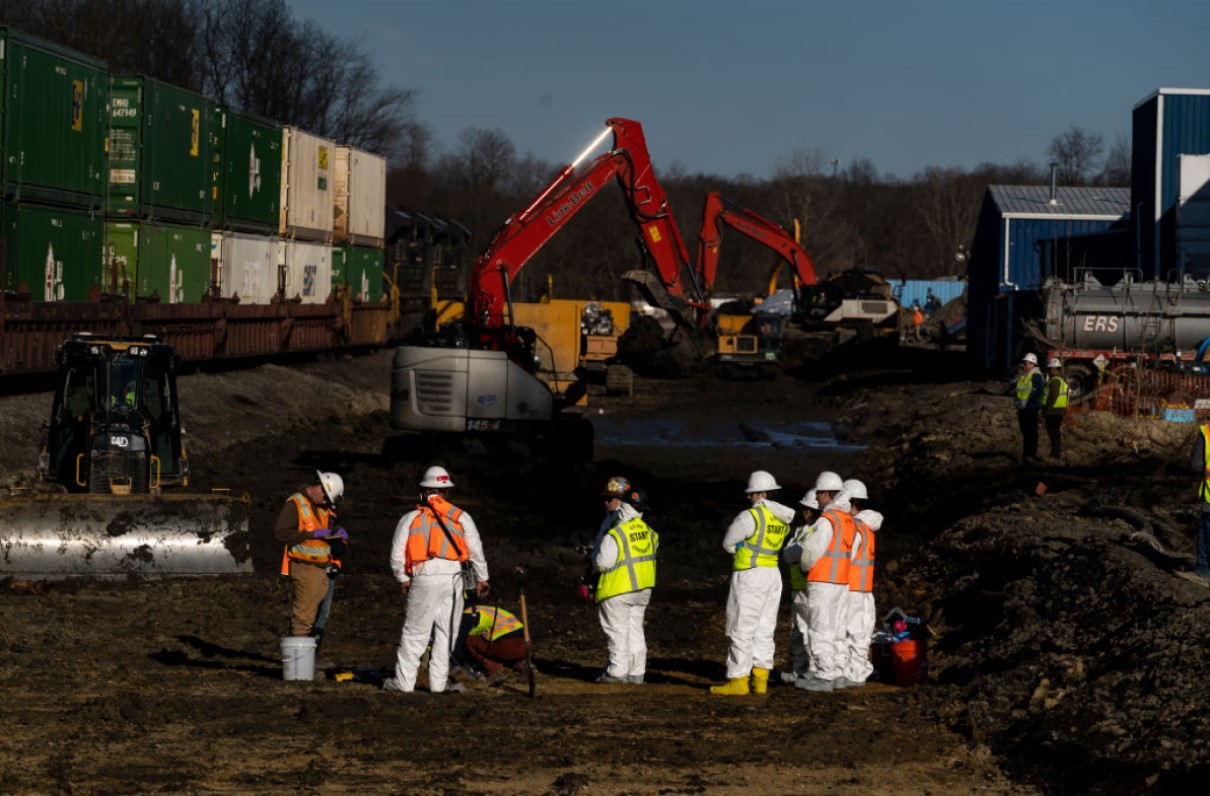From natural disasters to man-made crises, MOAA members Lt. Cmdr. Dallas Shi and Capt. Jill Shugart of the U.S. Public Health Service Commissioned Corps play vital on-site roles in protecting the health of millions.
 When a train carrying hazardous material derailed and caught fire in East Palestine, Ohio, in early February, Shugart, pictured, deployed to the site in charge of a 23-person team of environmental health scientists, epidemiologists, and health communication specialists. Shugart is the associate director for Emergency Management for the Agency for Toxic Substances and Disease Registry (ATSDR)/Centers for Disease Control and Prevention’s (CDC) National Center for Environmental Health.
When a train carrying hazardous material derailed and caught fire in East Palestine, Ohio, in early February, Shugart, pictured, deployed to the site in charge of a 23-person team of environmental health scientists, epidemiologists, and health communication specialists. Shugart is the associate director for Emergency Management for the Agency for Toxic Substances and Disease Registry (ATSDR)/Centers for Disease Control and Prevention’s (CDC) National Center for Environmental Health.
 As an epidemic intelligence service (EIS) officer for the CDC’s response team, Shi, pictured, helped conduct an Assessment of Chemical Exposure (ACE) investigation, which was comprised of an epidemiological assessment of community and first responders’ health concerns. An estimated 300 firefighters from 50 departments across Ohio, Pennsylvania, and West Virginia responded to the derailment and the subsequent fire that continued to burn for several days, CNN reported.
As an epidemic intelligence service (EIS) officer for the CDC’s response team, Shi, pictured, helped conduct an Assessment of Chemical Exposure (ACE) investigation, which was comprised of an epidemiological assessment of community and first responders’ health concerns. An estimated 300 firefighters from 50 departments across Ohio, Pennsylvania, and West Virginia responded to the derailment and the subsequent fire that continued to burn for several days, CNN reported.
Since the train derailment and fire, residents have complained about numerous health effects including headaches, cough, and fatigue.
As part of the assessment, Shi’s team collaborated with federal, state, and county partners to design three surveys – a community survey for Pennsylvania, another for Ohio, and a responder survey for first responders from federal agencies as well as Ohio, Pennsylvania, and West Virginia. Shi played a key role in both the survey design and its rollout. So far, more than 600 residents have participated in the ACE community surveys and 300 responders in the ACE responder survey.
[RELATED: More MOAA Members in the Spotlight]
Cooperation between ATSDR and the local first responders made gathering data easier, Shugart said.
“Having local firefighters go door-to-door with ATSDR staff engendered trust and allowed ATSDR to capture more data,” Shugart said.
Shi’s team hopes to present their findings and recommendations to local and state community leaders later this spring. Environmental Protection Agency (EPA) officials recently testified to Congress that the East Palestine cleanup could take a few more months. A temporary health clinic that opened in February to treat residents impacted by the derailment will move into a permanent location soon, according to Ohio Gov. Mike DeWine’s office.
MOAA board member Rear Adm. Scott D. Deitchman, USPHS (Ret), is not intimately familiar with the Ohio incident but knows the importance of the field work being done by Shi and Shugart. In similar incidents during his career, Deitchman would work out of the CDC headquarters’ Emergency Operations Center.
“In other situations, surveys like these [in Ohio] have been used for guidance for medical follow-up, for community public health practices such as air and water safety, and to help prepare for future incidents like this,” Deitchman said.
[MOAA INTERVIEW: The Future of the USPHS Commissioned Corps]
As part of the CDC’s EIS Program, Shi had already deployed several times during the COVID-19 pandemic as well as for monkeypox (now known as mpox) response.
A 19-year vet of the USPHS and an environmental health scientist, Shugart has worked with the Indian Health Service (Arizona), ATSDR (Kansas and Georgia), Administration for Strategic Preparedness and Response (Missouri), and the CDC (Florida and Georgia), and has deployed during hurricanes and chemical incidents, and in response to Ebola, Zika and COVID-19 threats.
Both Shi and Shugart have children at home and expressed gratitude to their spouses for their efforts at home while they are serving their country.
“I would like to recognize the incredible and, often times, thankless contributions of spouses when we deploy for our agency and for the USPHS,” Shi said. “Having a supportive spouse is paramount, and they deserve so much recognition and gratitude for our achievements.”
Want to Help Servicemembers in Your Community?
Learn how you can make a difference with your local chapter.

